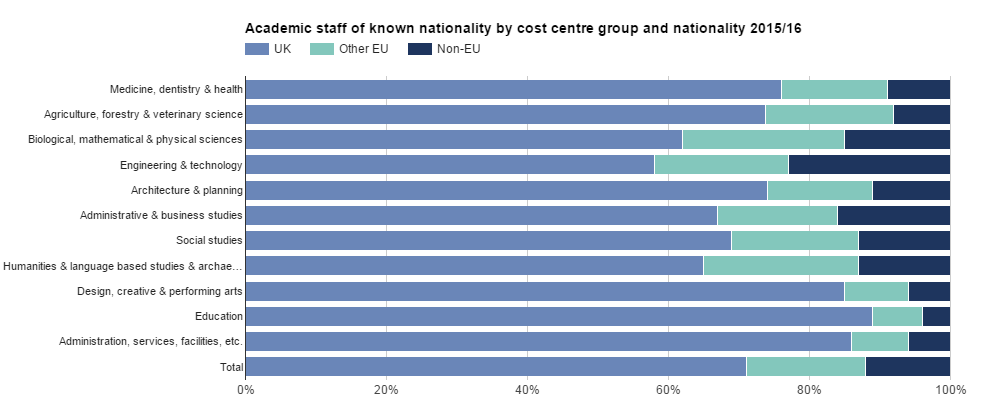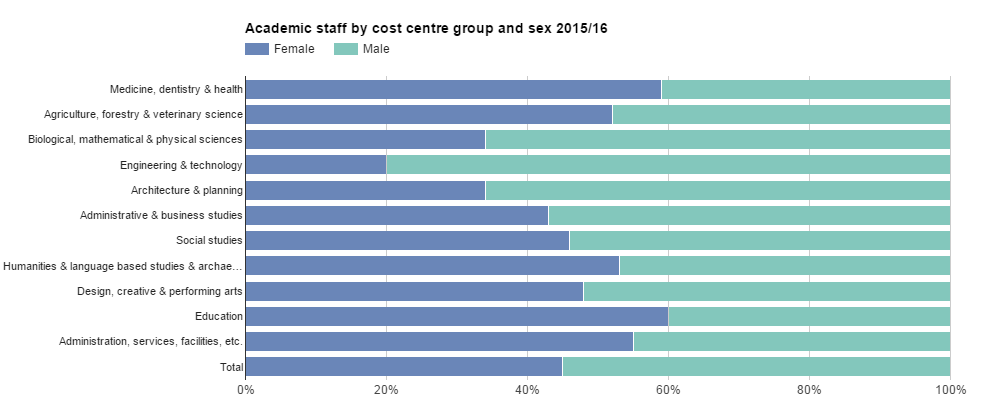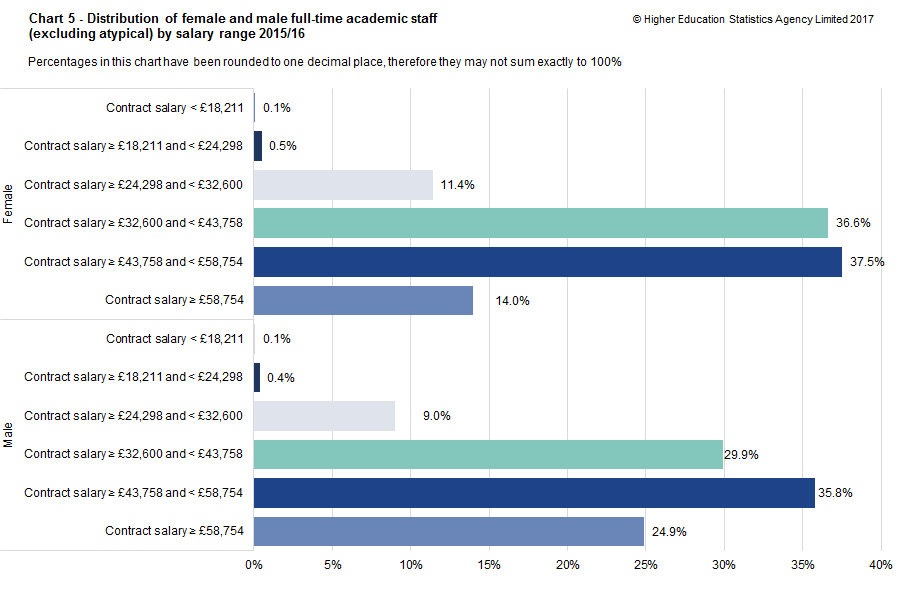Life sciences, humanities and engineering could bear the brunt of any “brain drain” of academics from other European Union countries after Brexit, new figures have indicated.
The latest detailed data on the nationality of academic staff working in UK universities, published by the Higher Education Statistics Agency, show that these are the subjects – identified by looking at the “cost centres” where people are employed – with the highest proportions of staff from other EU countries.
The status of EU citizens from other countries living and working in Britain is still unclear, with the government refusing to guarantee their right to stay ahead of the start of Brexit negotiations.
Although in practice it is likely EU citizens will be able to remain in the UK, there is a fear that European research funding changes, a perceived change in mood towards people from other parts of the EU and other factors may still drive such academics to seek work elsewhere.
Biological, mathematical and physical sciences had the highest proportion of academics from other EU countries in 2015-16 at 23 per cent; for humanities, language-based studies and archaeology the percentage was 22 per cent; and for engineering and technology it was 19 per cent. Overall, 17 per cent of academic staff were from other EU countries.
Looking at all non-UK academic staff, engineering and technology had the highest proportion in 2015-16: 42 per cent of them were citizens of other countries, both EU and non-EU.
Academic staff across UK by nationality and subject area

Perhaps worryingly for Scottish universities, the proportions of academics from other EU countries in each subject area in Scotland is generally even higher. Overall, the proportion is 18 per cent but for the life sciences category the percentage hits 26 per cent and for the humanities it is 24 per cent.
Academic staff in Scotland by nationality and subject area

Northern Ireland has the highest proportion of academics from other EU countries at 31 per cent, but this is perhaps not surprising given that many will come from the Republic of Ireland. Wales has the lowest proportion of non-UK EU academics at 11 per cent.
The University and College Union reacted to the figures by urging the government to quickly guarantee EU nationals the right to remain in the UK “to halt a brain drain in these key subjects and bring stability to staff, their families and universities”.
It said the figures came in the wake of a recent YouGov poll showing that 76 per cent of non-UK EU academics were more likely to consider leaving the country’s universities following last year’s referendum result.
“These figures demonstrate once again the important role that EU and international staff play in our universities,” UCU general secretary Sally Hunt said. “We are already hearing stories about academics considering leaving the country and these figures demonstrate how a brain drain would hit key areas…the hardest.”
Jessica Cole, head of policy for the Russell Group of large research-intensive universities in the UK, said the Hesa data showed it was “clear” that “EU academics make a significant contribution to UK universities. This is particularly true when considering strategically important subjects such as STEM and modern foreign languages.
“Ensuring UK universities can continue to recruit and retain talented staff and students from across the EU and more widely without bureaucratic visa burdens must be a priority as Brexit negotiations progress,” she said.
Meanwhile, the Hesa staff statistics also highlighted interesting data on the gender balance of the academic workforce in different subject areas.
Engineering and technology had the lowest proportion of female academic staff (just 20 per cent) in 2015-16, while education departments had the highest proportion of women (60 per cent).

Delving into the more detailed statistics from Hesa gives a flavour of the disparity in pay between male and female academics at the top end of the salary range. A much higher proportion of full-time male academics (24.9 per cent) than female academics (14 per cent) had contract salaries of more than £58,754.

Find out more about THE DataPoints
THE DataPoints is designed with the forward-looking and growth-minded institution in view
Register to continue
Why register?
- Registration is free and only takes a moment
- Once registered, you can read 3 articles a month
- Sign up for our newsletter
Subscribe
Or subscribe for unlimited access to:
- Unlimited access to news, views, insights & reviews
- Digital editions
- Digital access to THE’s university and college rankings analysis
Already registered or a current subscriber?



